In The Naked Scientists Guide to Genetics, Simon Bishop explores some common genetics terms, meets a creature from the depths of the sea floor, and befriends a family of fancy rats! The terms DNA, genes, chromosomes and inheritance are explored PLUS are humans really 50% banana? Music featured: Adventure, Darling by Gillicuddy http://freemusicarchive. org/music/gillicuddy/; Dan-O, at http://danosongs. com.
In this episode
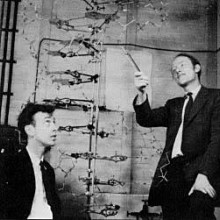
Defining DNA, and what is a gene?
with Enrico Coen, Genetics Society
Enrico Coen is the president of the Genetics Society. He seemed the perfect person to ask: what is DNA? He spoke to Simon Bishop.
Enrico - OK, so DNA is basically a very long molecule that carries all the hereditary information - or the bulk of the hereditary information - that we transmit from parents to children for all organisms, be they humans, cows, mice, bacteria, they all have this molecule that is carrying the hereditary information.
Simon - But how can a molecule be a code? How can there be information in a chemical?
Enrico - So the molecule carries - it's a like a very long string that carries a sequence of four different types of subunits, that are like letters, so they're often referred to as A, G, C and T. And the sequence of these letters is specific to each DNA molecule, so every individual will have a particular sequence of these letters. And just as words and the sequence of letters in a book can carry information and can determine the meaning of the book, so a lot of the meaning of organisms or the information that's needed for organisms to develop is carried in this long molecule.
Simon - So, that's it. DNA is a chemical that has four different components. When these components - which are called nucleotides but we think of them as letters - are arranged in a long chain, they spell out a code. But never mind DNA, I've also heard of genetic information. So, what is a gene?
Enrico - A gene is basically a short stretch of DNA that carries information, usually to create or code for a particular product, such as a protein. So it's a sort of convenient unit of the DNA, just as a word is a convenient unit when we want to think about letters, or a sentence is another convenient unit, so when we look at DNA we think in terms of certain units that make sense in terms of their own structure, and a gene is basically a unit of that kind.
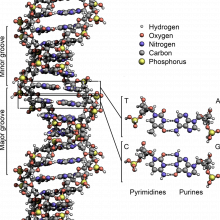
02:39 - The power of comparing DNA
The power of comparing DNA
with Max Telford and Mark Thomas, University College London
The structure of DNA is the same in every plant and animal. But the sequence of genes is not the same. This means that there is a lot we can learn by comparing DNA between species, as Simon Bishop found out on a visit to University College London.
Max - If you think about DNA, it's billions of bases long. So there are billions of characters that can be used to help us find groups of more closely or less closely related animals.
Simon - Max Telford, from the Department of Genetics, Evolution and Environment.
Max - If we think about morphological characters, we can group mammals together because they share hair and lactation. In the same way, DNA has characters - As, Cs, Gs and Ts - which are inherited, and they change, and the changes are inherited as well. So if we get a change in an ancestor of a specific group from an A to a C, then that change will be inherited by all the descendants of that group and will act as a marker for the members of that group all being more closely related to each other than they are to the things that still have an A.
Simon - In your work, you're looking at the differences between the nucleotide sequence of lots of different animals. What kinds of animals are you comparing?
Max - Well, we're interested in fairly deep relationships, so we're looking at big groups - the phyla of animals - that's things like annelids and arthropods and molluscs and chordates, so really big groups. These emerged about 560-600 million years ago, so they're very ancient relationships. And we're looking at the relationships between these phyla to see how these major body patterns evolved and the relationships between the different groups.
Simon - And what have you found?
Max - Well we've looked at different groups but something we've been working on a lot recently is a single species called Xenoturbella bocki. And Xenoturbella is a very simple worm, it was originally classified along with the flatworms. The first studies of Xenoturbella looked at its DNA, when they compared it to the same bit of DNA in lots of other animals it was most similar to the DNA from a bivalve mollusc - that's something like an oyster or a mussel. And this was very puzzling and this was when I first started working on Xenoturbella. Our hunch was that what had actually happened was this first study of the DNA of Xenoturbella, what they'd actually extracted, actually came from something Xenoturbella had eaten - and in fact we know that Xenoturbella eats bivalve molluscs. So our first experiment was to repeat this DNA extraction and, before we did it, to remove the gut of Xenoturbella. And when we did that, we didn't find any mollusc DNA, we actually found to our surprise that Xenoturbella was most closely related to a group called the deuterostomes. And this was quite exciting, because deuterostomes include the chordates, and we're chordates! So the vertebrates are part of the chordate phylum.
Simon - This is a Xenoturbella you're showing me now. What a weird thing! This is like a white, squidgy, flat, worm thing. What on Earth is this that we're looking at?
Max - Well you're right it looks very very simple and it is very simple. It looks rather flatworm like. It's sort of defined more by what it lacks than what it has. It doesn't have a through gut, so it doesn't have a separate mouth and anus, as most bilaterally symmetrical animals do, so it seems to have lost this. It comes from the common ancestor of the hemichordates, echinoderms and the chordates and this we know - because all those groups have gill slits - must have possessed gill slits, and Xenoturbella doesn't have gill slits, so this is another character it's lost. And it's got a very, very simple nervous system. It's more like a nerve net similar in a sense to what you find in the jellyfish, rather than the central nervous system you find in many of the other deuterostomes.
We collect Xenoturbella in Sweden, which is where they were first described. They're at the bottom of the only fjord in Sweden, which most people think there's lots there - I certainly used to - but all the other fjords are in Norway. So they live in the mud about 60 to 100 metres down where there is a plentiful supply of these bivalve molluscs they eat, and we go to a marine station called Kristineberg on the west coast of Sweden on the edge of this fjord, we go out on a boat and dredge mud up from the bottom, and search through the mud, and this is where they are found.
Simon - It's a very, very simple thing, it's lacking an awful lot of very important features, it's got a very simple brain, and yet the DNA is here telling us that this is more similar to us than to the other worms, the molluscs, things that, in the case of something like an octopus would have a much more complicated brain.
Max - The DNA is telling us it's related to these complex animals and yet it's much more simple. In fact that's something we're trying to understand now. We know the morphology is very simple and this must mean they've lost a lot of characters. And so looking at the genome, is there a connection between the morphological simplification and an equivalent simplification of the genome? Has it lost lots of genes, and which genes has it lost? Can we associate those with the morphological characters that it has lost? That's something we're working on now.
Simon - It's not just the DNA of weird and wonderful creatures that we can study. Mark Thomas, at University College London, compares human DNA sequences. In particular, he looks at variation in the genes for enzymes that can break down drugs.
Mark - There are a number of enzymes, we would broadly call them detoxification enzymes, and the reason they're there is that in facts plants produce a whole arsenal of toxic compounds - because they don't really want to be eaten. And so we've evolved a whole range of enzymes to deal with those toxic compounds and it just so happens that those also manage to break down many, many pharmaceutical drugs. In a number of studies we've tried to understand what differences there are in different populations because that's going to have an effect on which drugs work well in different populations.
Simon - Are you looking at any specific types of populations, or do you have a large sample of DNA samples from around the world?
Mark - The field is looking around the World, we have a particular interest in Africa, because we've been interested in population history in Africa for a number of years and as a result we have quite a large collection of DNA samples from different African populations.
Simon - Do you see that the knowledge that you're getting from this could affect the different drugs that are prescribed around the continent?
Mark - It contributes to that, yes. Building up a better picture of the genetic differences between different people and how that affects whether drugs work well, whether they don't work because that person just gets rid of them quickly or whether they're actually very toxic because that person can't get rid of them hardly at all, these are obviously important. They make a big difference to the outcomes of giving people drugs and drugs are very important, obviously, in health. I think a figure that was quoted to me a number of years ago was that the fourth biggest killer of people in hospitals in the developed world is a bad reaction to a pharmaceutical drug, which is staggering! But, obviously, you can't throw the baby out with the bathwater and say OK let's not use pharmaceutical drugs because then by far and away the biggest cause of death in hospitals will be failure to give people a drug that would save them. But, clearly there are risks with drugs because a lot of them are very powerful, and there are big differences in how well people can handle those drugs. And we know that a lot of that is genetic and so understanding the genetics of why people are different in how they respond to those drugs is obviously important.
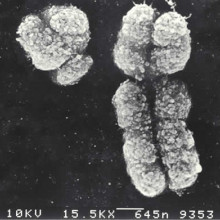
What is a chromosome?
with Eugenio Sanchez-Moran
Transcript to follow
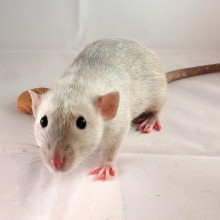
15:48 - How genetic inheritance works
How genetic inheritance works
with Nelly Brewer and furry friends, Rothamsted Research
Transcript to follow
- Previous Taking shape
- Next Is size important?
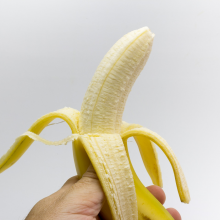










Comments
Add a comment